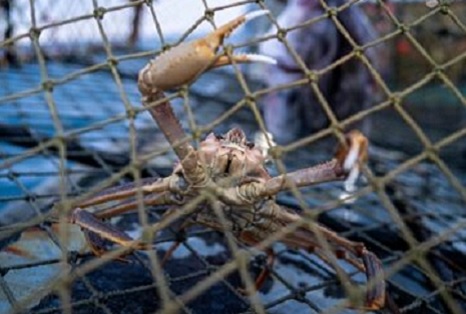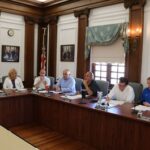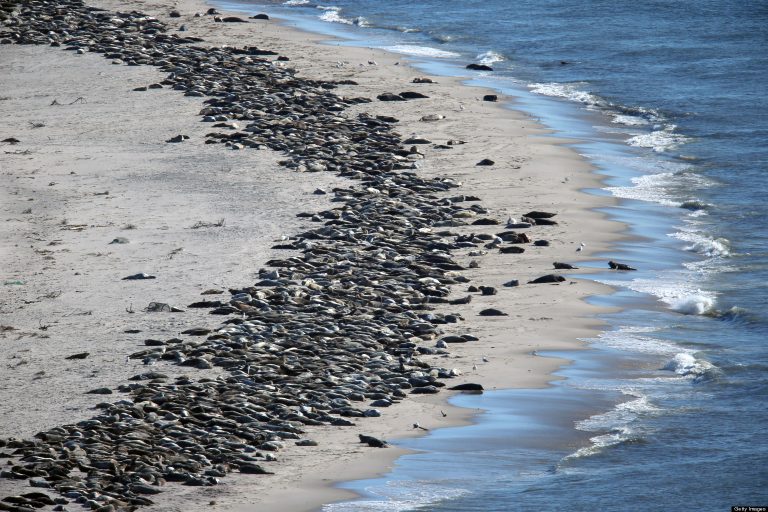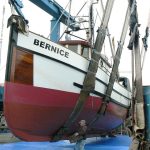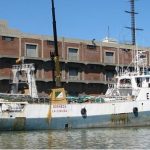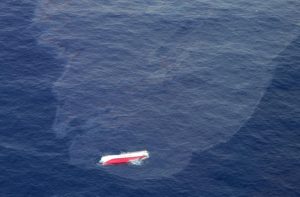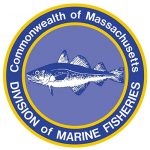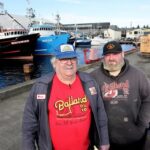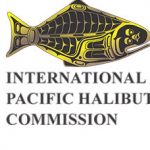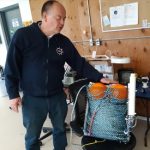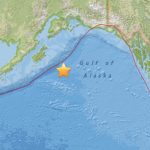Tag Archives: Alaska Department of Fish and Game

Southeast Alaska’s summer Dungeness crab fishery worth $10M less than last year
State managers closed Southeast’s Dungeness summer fishery, which opened June 15, two weeks early by emergency order because of low harvest numbers. It’s been five years since the last time that’s happened. This summer season harvest was just under 1.3 million pounds, nearly two million pounds less than last year. Along with the lower harvest, was a corresponding drop in value. This year the fishery was worth $3.77 million. Last year it was $13.03 million. This year’s price was $2.96 per pound. That’s about average for Dungeness crab over the last decade. >click to read< 11:41
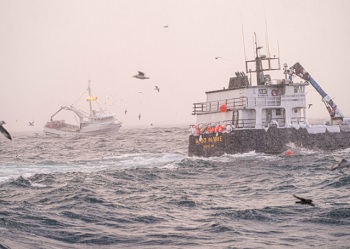
Massive losses predicted from Bering Sea crab closures
While other crab stocks have been declining in the North Pacific for years, the snow crab fishery’s collapse is doubly shocking for the industry. Not only is it one of the larger crab fisheries by volume in Alaska, it has also gone from booming and healthy to overfished and collapsing within five years, with little warning or clear explanation. Fishermen who made investments in permits and boats less than five years ago are now looking at bankruptcy. Alaska Bering Sea Crabbers, the trade organization representing the industry, has estimated the direct financial losses at about $500 million. Adding in the ripple effects to the economy, that estimate rises to about $1 billion. >click to read< 07:50
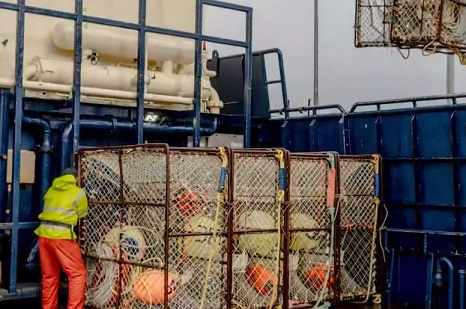
Fishermen fear going out of business after Alaska cancels snow and king crab harvest
For the first time ever, the Bering Sea snow crab harvest is closed, and for the second consecutive year, the Bristol Bay red king crab harvest is as well. The closure will result in fewer King and Snow crabs showing up on the menu, but the biggest impact is being felt by fishermen. “My husband is a 5th generation fisherman. His mom grew up in Ketchikan,” said Bri Dwyer who is a Commercial Fishing Industry photographer and storyteller. Her husband Captain Sean Dwyer is featured on the TV show Deadliest Catch. The family found out with everyone else this week that their crabbing season in the Bering Sea could be nonexistent. Video, >click to read< 08:48
Bering Sea king and snow crab seasons canceled amid population declines – Gabriel Prout co-owns the F/V Silver Spray with his dad and brothers. The Silver Spray is a 116-foot steel crabber that’s homeported in Kodiak. “The real shocking part is the total and complete collapse of the snow crab fishery which no one expected last year when it happened, and a complete closure this year was equally as shocking,” Prout said. >click to read<
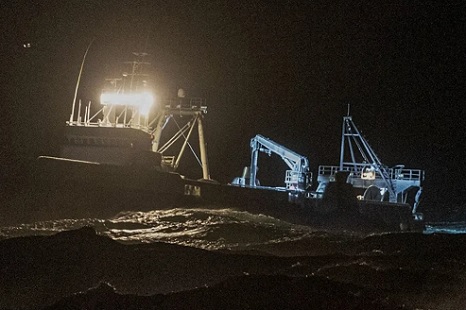
Conservation concerns cancel Alaska’s Bering snow, king crab seasons
Alaska officials have canceled the fall Bristol Bay red king crab harvest, and in a first-ever move, also scuttled the winter harvest of smaller snow crab. The move is a double whammy to a fleet from Alaska, Washington and Oregon pursuing Bering Sea crab in harvests that as recently as 2016 grossed $280 million. “I am struggling for words. This is so unbelievable that this is happening,” said Jamie Goen, executive director of the Alaska Bering Sea Crabbers. “We have third-generation fishermen who are going to go out of business.” >click to read< 14:47
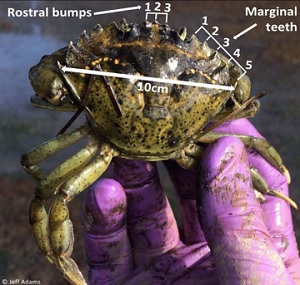
Invasive Green Crab Detected in Alaska for the First Time
The green crab is an invasive marine species spreading throughout the coastal waters of the United States. Efforts between NOAA Fisheries and Metlakatla Indian Community have been leading the way on monitoring to detect this species’ presence in Alaskan waters. The green crab has been found in U.S. waters since the 1800s, but this is the first confirmed presence in Alaska. They are a threat to native species and habitats. They are highly competitive predators that can decimate shellfish populations, outcompete native crabs, and reduce eelgrass and salt marsh habitats. They are a serious threat for Alaska’s tidal habitats. >click to read< 11:47
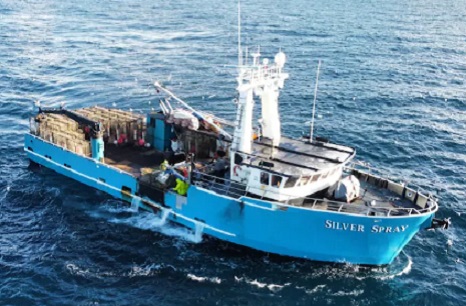
Alaska’s snow crabs have disappeared. Where they went is a mystery.
Gabriel Prout and his brothers Sterling and Ashlan were blindsided. Harvests of Alaskan king crab, the bigger, craggier species that was the star of the television show “Deadliest Catch”, have been on a slow decline for over a decade. But in 2018 and 2019, scientists had seemingly great news about Alaska’s snow crabs: Record numbers of juvenile crabs were zooming around the ocean bottom, suggesting a massive haul for subsequent fishing seasons. Prout, 32, and his brothers bought out their father’s partner, becoming part owners of the 116-foot F/V Silver Spray. They took out loans and bought $4 million in rights to harvest a huge number of crabs. It was a year that many young commercial fishers in the Bering Sea bought into the fishery, going from deckhands to owners. Everyone was convinced the 2021 snow crab season was going to be huge. And then they weren’t there. >click to read< 08:27
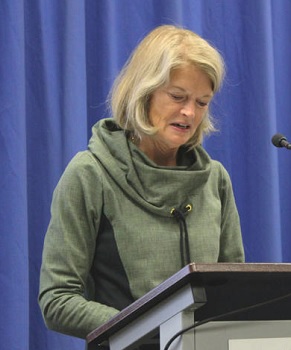
Bycatch stirs debate at fisheries roundtable
Hosted at Kenai Peninsula College by the Kenai River Sportfishing Association, the three-hour event brought together a who’s-who lineup of fisheries and policy experts from Alaska. That lineup included Alaska Department of Fish and Game Commissioner Doug Vincent-Lang, who said Bering Sea trawling is not responsible for Alaska’s declining chinook salmon runs. The Magnuson-Stevens Fishery Conservation and Management Act defines bycatch as fish harvested in a fishery that are not sold or kept for personal use. The phrase is sometimes used generally to refer to the capture of fish that are not being targeted by a specific fishery that are discarded. >click to read< 09:59

Fish and Game closes part of the Upper Cook Inlet to gillnet fishing
The Alaska Department of Fish and Game closed all set gillnet fishing in the Kenai, Kasilof, and East Forelands sections of Upper Cook Inlet after low counts of large king salmon passages. This is the third year in a row that the department has closed this fishery, with Ken Coleman saying it’s becoming a strain on some of those who set gillnets for a living. “We watch the fish jump by, watch everybody else having a good time doing what they do and we’re all losing money,” Coleman said. This closure impacts businesses collectively as it’s a chain reaction effect across the area. Video, >click to read< 15:07

Vessel runs aground near Naknek, prompts temporary fishing closure
After a fishing vessel washed up on shore in the Bristol Bay area near Naknek and leaked diesel fuel, the Alaska Department of Fish and Game temporarily closed commercial salmon fishing. The closure went into effect at 6 p.m. Monday and has since been rescinded. According to the Alaska Department of Fish and Game in King Salmon, there is a salvage crew working on the fishing tender on Naknek Beach south of Pederson Point Cannery. ADFG announced that they have removed major sources of pollutants, but a small residual sheen has been left behind. Video, >click to read< 09:24

Bristol Bay’s sockeye run is already the biggest on record
Bristol Bay’s 2022 sockeye run is now the biggest on record: 69.7 million fish have returned this summer. That surpasses the previous record of 67.7 million fish, which was set last year. Bristol Bay’s commercial fleet hauled in the most fish on record this year. More than 3 million sockeye have swum up the Wood River to spawn in the tributaries around Lake Aleknagik, about 20 miles from Dillingham, according to the state’s counting tower on the river. Sherol Mershon lives along the lake near the head of the river. She owns a bed and breakfast there and has hung commercial fishing nets for 45 years. She said this year’s runs are remarkable. >click to read< 12:10
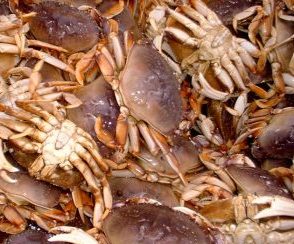
Dungeness crab fishery to close early after slow start
The commercial Dungeness crab fishery in Southeast Alaska will close early this summer because the start of the season has been so slow. In recent years, Dungeness crabbing has been pretty great for commercial fishermen in Southeast. The harvests and prices have been above average, sometimes way above. Last year, saw the second highest harvest on record and the highest price ever paid. The summer season was worth $13 million. But this year looks different. The season opened on June 15. About 200 fishermen registered in the region and they’ve reported poor fishing. “I’ve heard generally it’s slow,” said Joe Stratman with the Alaska Department of Fish and Game. “I’ve heard generally it’s slow throughout the region.” It’s only the third time in the last 20 years that the season has been shortened. >click to read< 10:14
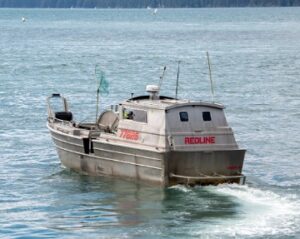
PWS harvest soars above 9M fish, statewide catch exceeds 16M salmon
Commercial harvesters in the Prince William Sound region delivered upwards of 371,340 salmon through Tuesday, June 28, while the statewide preliminary harvest exceeded 16 million fish, including deliveries in Bristol Bay, Cook Inlet, Kodiak and the Alaska Peninsula. Harvests reached almost 8% above year-to-date 2021 (2020 for pinks), led by strong sockeye harvests in the Alaska Peninsula and Bristol Bay regions, according to Sam Friedman, who is producing the McKinley Research Group weekly in-season reports on behalf of the Alaska Seafood Marketing Institute. For Prince William Sound, harvests and the weights of salmon harvested remained below the 10-year average, according to Alaska Department of Fish and Game biologist Jeremy Botz, in Cordova. >click to read< 09:06

Copper River salmon fishery starts slow but sees potential to ramp up
The Copper River sockeye and king salmon fishery is the first each summer, kicking off around the third week of May. Because of that, the fishermen usually land a higher price per pound both for sockeye and kings. This year, the run for the Copper is predicted to be around or below average, and like elsewhere, the kings are scarcer than in past decades. This year is also seeing the sockeye run show up later than usual. Last weekend saw daily numbers increasing passing the Miles Lake sonar on the Copper River, reaching just shy of 39,000 sockeye Sunday, according to the Alaska Department of Fish and Game. That’s the highest daily count yet and puts the total count at about 153,000, ahead of the count at the same time in the last two years. >click to read< 09:20
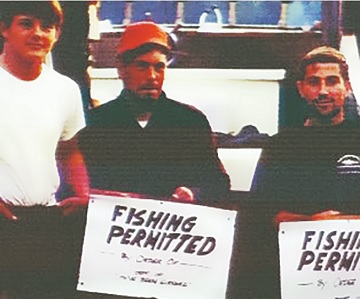
Fishing permitted
Another commercial fishing season is here, and the race is on to get those potentially lucrative “marker” sets. Back in the good old days, a series of signs designating where fishing was prohibited were placed on posts across the Copper River Flats or typically nailed to trees near various streams and bays on Prince William Sound. At one time, the Protection Division of the Alaska Department of Fish and Game even had “stream guards” camped near prime areas to prevent encroachment. “Jumping the gun” to get the first set of an opener was always a tense moment, as was pushing the “line”. One almost longs for the good old days, and some of the colorful stories that resulted. > click to read < 10:29

All eyes on Bristol Bay after state predicts a record season, but fishery’s economics still in flux
The summer salmon season is due to ramp up in Alaska over the next few months, and the main focus of this year’s salmon fishery statewide will be on Bristol Bay sockeye. Of the 160.6 million salmon of all species that the Alaska Department of Fish and Game forecasts will be harvested in 2022, 74 million of those are sockeye and about three-quarters of those would come from Bristol Bay. Another 67.2 million are pink salmon, with the rest made up of smaller numbers of the other three species. If the forecast proves accurate, this will be the biggest year ever for the Bristol Bay fishery. > click to read < 14:15
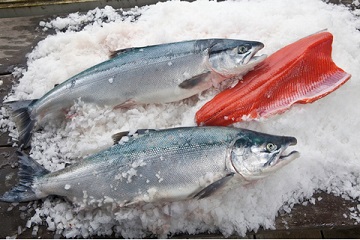
2022 Copper River Salmon Season Launches on May 16th
It’s official. Alaska’s Copper River commercial salmon season will begin on Monday, May 16th, when the region’s commercial fishermen will be allowed to set their nets for a twelve-hour opener to harvest the revered king and sockeye salmon from the icy glacial fed waters of the Copper River Delta. Sustainably harvested according to strict guidelines set by the State of Alaska, Copper River wild salmon, king, sockeye, and coho, are renowned worldwide for good reason. High in protein and naturally rich in heart-healthy omega-3 fatty acids, Copper River salmon return to the region’s massive Delta each year from May to September, making the journey up the steep glacial fed waters. >click to read< 08:54

NPFMC asks industry for recommendations on Bristol Bay red king crab
The Bristol Bay red king crab fishery is historically one of the most valuable in the state, but for the last decade, the stock has been declining. Last fall, surveys showed that the female biomass of the stock had fallen below acceptable levels for harvest, and managers closed it. At the April NPFMC meeting, the council members approved a motion to ask the industry to come back with a list of voluntary actions harvesters and other industry stakeholders can take to help reduce bycatch of Bristol Bay red king crab and reduce discard mortality in the directed fishery. Industry stakeholders include not just the directed harvesters in the red king crab fishery, but also reach to the Pacific cod sector, pollock, and Amendment 80 fleets, which impact red king crab stocks based on area and bycatch rates. >click to read< 15:10

Is It the Last Stand for the Fishermen of the Deadliest Catch?
Fishing has never been an easy job as has been demonstrated on previous seasons of the Deadliest Catch, but when the 18th season premieres this week, it may very well be the last stand as for the first time in a quarter of a century, Alaska’s Department of Fish and Game closed Bristol Bay Red King Crab Fishery for the 2020/2021 season. Times are so desperate that Capt. Sig Hansen has relocated to Karmǿy, Norway, where invasive Red King Crab from Russia offer a temptingly lucrative, but risky new market for the veteran crabber, after a disastrous attempt to keep the fishery open. Video trailer, >click to read< 12:16

Record commercial herring harvest wraps up in Sitka Sound
The commercial herring fishery in Sitka Sound wrapped up Sunday, April 10, with its largest harvest on record. The sac roe fishery had daily openings last week, with the last one on Sunday. The Alaska Department of Fish and Game estimates the catch totaled over 26,350 tons, more than half of this year’s guideline harvest level of 45,164 tons. That beats the previous record for the fishery from 2011, when the fleet caught 19,419 tons. Fishing started on March 26. >click to read< 11:37
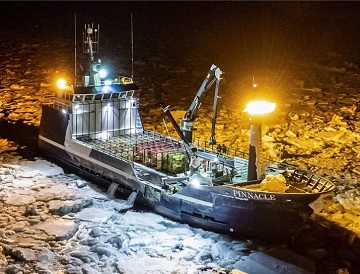
Into the ice: A crab boat’s quest for snow crab in a Bering Sea upended by climate change
Aboard the F/V Pinnacle in the Bering Sea. Through the wheelhouse window, Capt. Mark Casto spotted a white line on the horizon. The edge of an ice floe was illuminated by bow lights piercing the morning darkness of the Bering Sea. He throttled back the engines. Soon, the Seattle-based crab boat began to nose through closely packed pancake-like pieces and bigger craggy chunks, some the size of boulders, which bobbed about in the currents and clanged against the hull. Casto grabbed a microphone to relay a change in plans to the deck crew. Pull the pots up and stack them aboard. They would search for crab somewhere else. “Where the hell did that ice floe come from? … We’re retreating. It’s a hard word to say,” Casto declared. photos, video, charts and grafs, >click to read< 17:50

Fish Board mostly leaves Sitka herring alone following truce between users
After days of deliberation and a contentious set of proposals targeting the Southeast Alaska herring fisheries, the Alaska Board of Fisheries ultimately declined to make any major changes. To make attending the multi-week meeting easier for stakeholders, the board split the proposals into topics scheduled in three sessions, with herring first. There were 14 proposals dealing with herring from a variety of stakeholders, but the most contentious was were from the Sitka Tribe of Alaska and the Southeast Herring Conservation Alliance. The tribe’s proposals asked for a variety of changes to Sitka Sound herring management. The tribe’s main focus was to try to preserve more of the herring stock for subsistence use, but the commercial stakeholders say it would have come at the cost of the industry. >click to read< 15:15

Survey says processors are beefing up for record Bristol Bay run, but it still might not be enough
If the state’s forecasts for the 2022 Bristol Bay sockeye run are even close to accurate, there could end up being millions more fish to catch than anyone is willing, or able, to buy. A survey conducted in January by the Alaska Department of Fish and Game of 15 Bristol Bay-area processors found that the processing companies intend to purchase up to 52 million sockeye this year. However, the department is predicting a record Bristol Bay inshore run next year of more than 73 million fish, which would provide nearly 62 million available for harvest based on the escapement goals for each of the major river systems that feed the Bay. The record-level prediction follows a record inshore run of more than 66 million sockeye last year that lead to a commercial harvest of 40.4 million fish, one of the largest Bristol Bay sockeye harvests ever. >click to read< 12:07

Bycatch task force works to refine mission ahead of November deadline
Bycatch is when fishing vessels catch something they’re not targeting. It could be tanner crab caught in a black cod pot, or halibut scooped up in a pollock trawl net. It’s been an incendiary issue in Alaska’s fisheries for decades. Now, as stocks of crab, salmon and halibut decline, trawl fisheries have come under fire for their role, which represents the vast majority of incidental catch in and around Alaska. The governor’s office took notice. Gov. Mike Dunleavy established a task force to review bycatch late last year with a deadline of November to submit its recommendations. But during that time, the Alaska Bycatch Review Task Force also has to establish its own priorities, break into subcommittees, and decide what it’s going to focus on before its mandate expires in just nine months. And there’s a lot of information to sort through already as it plays catch-up. >click to read< 11:01

While Chignik fishermen wait on 2018 relief funds, some look beyond the fishery to survive
Aloys Kopun sat in the small harbormaster’s office in Chignik Bay last July as a few boats gently bobbed in the harbor’s turquoise water. “When we were fishing like we normally fished here, the whole harbor was always plump full,” he said. “As you can see, now, we had hardly nobody in here. And everybody’s gone tendering or went to other areas to fish, or some of them went broke.” Kopun fished in Chignik, on the Alaska Peninsula, for decades before becoming the summer harbormaster. Significantly fewer boats have returned since the Chignik sockeye run failed in 2018. Fishermen who depend on the salmon closed out that season without making a paycheck. photos, >click to read< 12:02
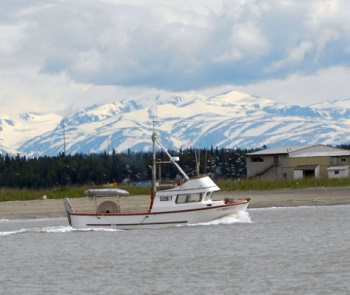
Alaska Department of Fish and Game forecasts fair to poor sockeye runs for Cook Inlet, Copper River
State biologists are projecting a mixed bag of returns this spring and summer for Southcentral’s popular sockeye salmon fisheries. Alaska Department of Fish and Game officials on Feb. 7 issued a forecast estimating that just less than 5 million sockeye will return to upper Cook Inlet river systems, allowing for a harvest of nearly 3 million sockeye from the region overall. It’s expected approximately 2.9 million fish from the total run will be headed to the Kenai, with another 941,000 pegged for the nearby Kasilof. >click to read< 19:19

Southeast Alaska’s upcoming tanner crab fishery could be the best in decades
The upcoming tanner crab fishery in Southeast Alaska is looking very promising. The fishery starts on Feb. 11, and the harvest and price could be historic. State crab managers haven’t seen this kind of encouraging preview for Southeast’s tanner fishery for a few decades. The Alaska Department of Fish and Game has tracked the tanner population through annual surveys since the late 1990s. “What we’re seeing is kind of historically high levels,” said Joe Stratman. He says the numbers look like they did when the surveys first started. It’s not only the harvest that looks good but also the price. >click to read< 17:08

Dunleavy’s super-special election year bycatch task force – Bycatch is on the ballot.
Gov. Mike Dunleavy recently announced the formation of a shiny new “task force,” charged with studying the impacts of bycatch on Alaska fisheries and making recommendations to policy makers. The Alaska Department of Fish and Game has supposedly been doing exactly this for nearly half a century with its permanent voting seat on the North Pacific Fisheries Management Council, or NPFMC. >click to read< By Alexus Kwachka 17:12
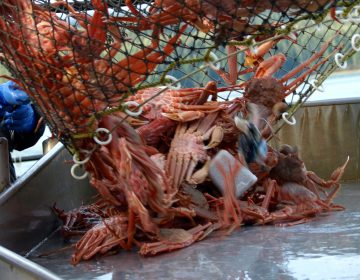
After a yearlong closure, Tanner crab season makes a comeback off Kodiak Island
Dave Kubiak spent a recent rainy Thursday stacking the deck of his boat, the Laura Lee, with crab pots in preparation for Kodiak’s Tanner crab season. According to him, the night before the season is always exciting. “We’ll leave in sufficient time to get there and to go someplace and anchor up,” he said. “And then wait for the morning and then run out and get all nervous and jittery on the opener, which is silly, but we do.” Kubiak said that he got a nickel per pound for Tanner crabs back in the 60s. Due to low supply and high demand across the country, prices for this season, which opens Jan. 15, are much higher,,, >click to read< 09:20

Wild pink salmon came in stronger than expected
Prince William Sound’s 2021 commercial salmon fishery proved challenging in the midst of a second year of the global novel coronavirus pandemic and increasing climate change, with harvesters delivering nearly 70 million salmon valued at an estimated $121.49 million. That added up to almost $72 million more than the value of last year’s commercial harvest of 25.5 million fish, according to preliminary state fisheries summaries. Humpy returns were the big surprise. Everyone came into the season a little bit skeptical because 2019 was such a poor year, but they perked up when they realized what they were seeing, Scannell said, of the odd year pink salmon run. >click to read< 09:58






